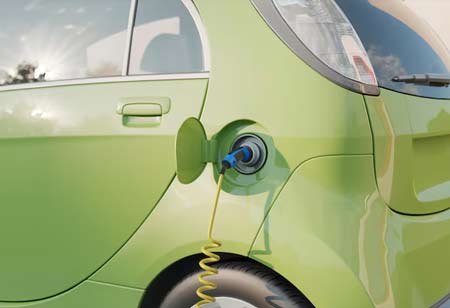Thank you for Subscribing to Energy Business Review Weekly Brief
Mastering Alternative Fuel Specifications for a Greener Future
Globally, sustainability is gaining prominence as alternative fuels like biofuels, hydrogen, natural gas, and electricity reduce reliance on fossil fuels and minimize environmental damage.

By
Energy Business Review | Thursday, April 17, 2025
Stay ahead of the industry with exclusive feature stories on the top companies, expert insights and the latest news delivered straight to your inbox. Subscribe today.
Each alternative fuel has specifications that define the efficiency and environment.
FREMONT, CA: Globally, sustainability is gaining prominence as alternative fuels like biofuels, hydrogen, natural gas, and electricity reduce reliance on fossil fuels and minimize environmental damage.
Biofuels are fuels produced from organic matter, mainly from plant and animal waste, and they can replace petroleum-based fuels to some extent. The various kinds of biofuels available include ethanol and biodiesel. Ethanol is made from corn or sugarcane; it is added to gasoline to increase its octane ratings and decrease its emission rate. Ethanol specification includes parameters for ethanol content typically expressed in percent, e.g., E85, which contains 85 percent ethanol. The other, biodiesel, is obtained from vegetable oils or animal fats and is ready for use in diesel engines. It has specifications that include the ratio of the blend with the petroleum diesel—e.g., B20 contains 20 percent biodiesel—and quality indicators like cetane number, which influences ignition quality.
Hydrogen is a potential alternative fuel for its promise to emit nothing when used in fuel cells. Hydrogen fuel specifications include purity, storage conditions, and energy density. High-purity hydrogen is required if fuel cells are to attain efficiency; typical purity values range above 99.9 percent. Storage is also vital since hydrogen must be stored under pressure or at very low temperatures to remain in its fuel state. While having a high energy density per-weight basis, the actual energy density of hydrogen is low at ambient conditions.
Natural gas is primarily methane gas utilized for running vehicles and home heating applications. Its specifications include methane content, which should ideally be more than 90 percent for optimum performance, and calorific value, which measures energy content. These two primary forms are used as fuels: Compressed Natural Gas and Liquefied Natural Gas. On the other hand, CNG is stored at high pressure, while LNG is cooled to cryogenic temperatures; thus, unique storage and handling practices are required for safe and efficient operations.
Electricity is a multi-applicative, alternative fuel that runs electric vehicles and many other devices. The critical specifications associated with electricity as a fuel are its energy capacity, measured in kilowatt-hours, and specifications needed at charging infrastructure. For EVs, the battery capacity defines the range a vehicle can cover, with the charging speed defining end-user convenience. Efficiency in using electricity for motion or other forms of energy is another critical specification.
Every other fuel type has different specifications that go with it, affecting usability, efficiency, and the environmental benefits correlated with it. Knowing these specifications will be helpful as industries and consumers grow in their use for decisions regarding appropriate energy sources, choices of vehicles, and investments in infrastructure. Continued improvement in alternative fuel technology and specifications holds the key to sustainable energy and the mitigation of the challenges of climate change.






